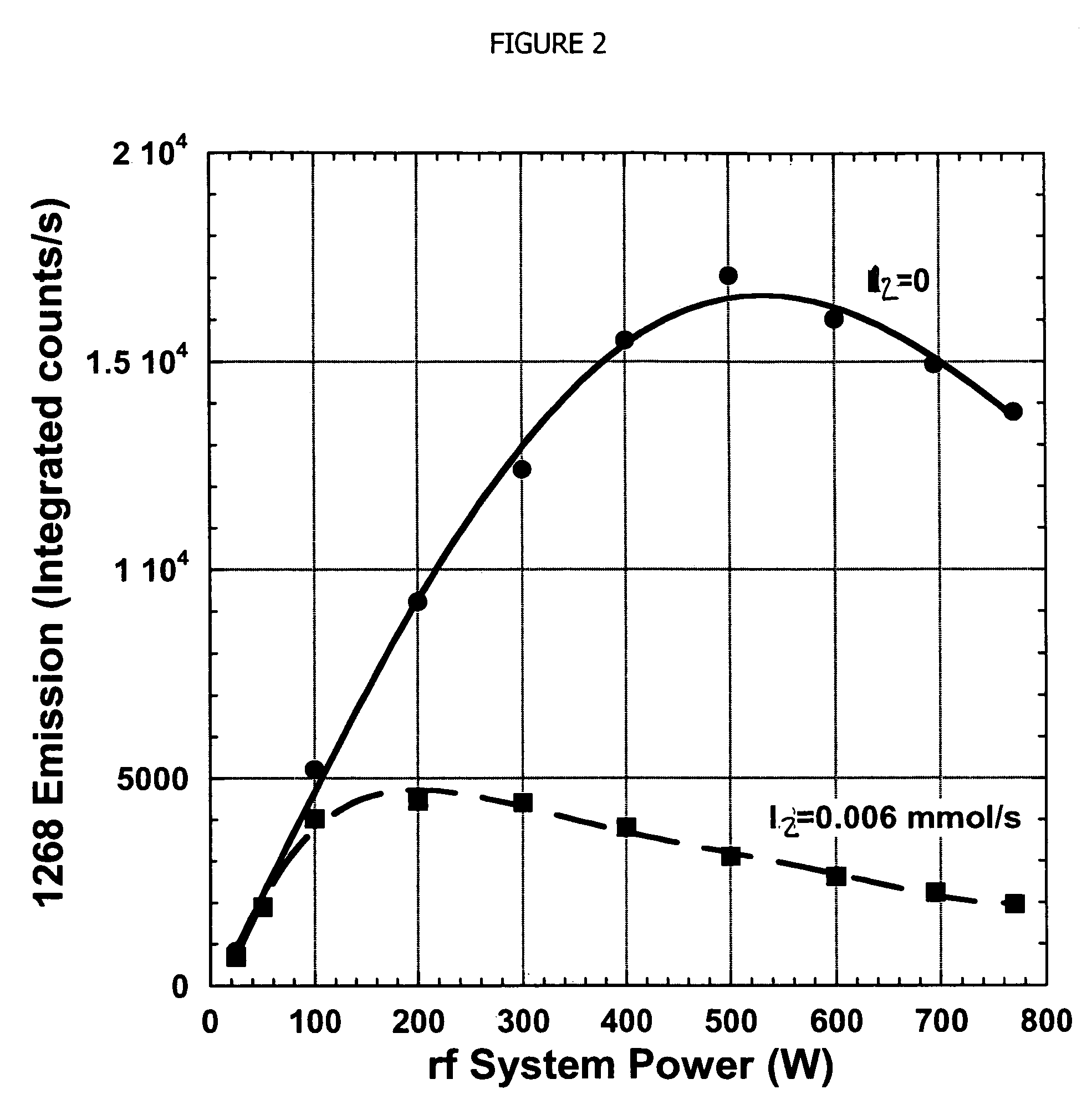Method, system and apparatus for an enhanced electrically pumped oxygen iodine laser
an oxygen iodine laser and laser technology, applied in the direction of laser details, excitation process/apparatus, electrical apparatus, etc., can solve the problems of positive gain, all attempts to produce such a device have failed, etc., and achieve the effect of low ionization threshold and easy production
- Summary
- Abstract
- Description
- Claims
- Application Information
AI Technical Summary
Benefits of technology
Problems solved by technology
Method used
Image
Examples
first embodiment
[0048]Referring now to FIG. 1 in a first embodiment an electrically pumped oxygen iodine laser (OIL) system is illustrated and generally referenced to as 100. The OIL system includes a first electrical generator 120 to produce a primary flow 125 containing singlet-delta oxygen O2(a1Δ). The first electrical generator 120 is a radio frequency (hereinafter rf) discharge generator between two internal hollow cathode electrodes (approximately 13 cm long) operating at about 13.56 MHz. The plasma zone is approximately 4.9 cm in diameter and 25 cm long, similar discharge configurations were a part of U.S. Pat. No. 6,501,780.
[0049]Two diagnostic ducts 140 and 160 were used for measurement purposes. The first diagnostic duct 140 was made in the subsonic region and has four windows through which simultaneous measurements are made of the optical emission from O2(a) at 1268 μm; O2(b1Σ) [also denoted O2(b) hereafter] at 762 nm; I* at 1315 μm; and the gain / absorption proportional to {[I*]−0.5·[I]}...
second embodiment
[0099]The first experiment of the run with 3.0 mmol / s of O2 mixed with 16.0 mmol / s of He and 0.15 mmol / s of NO flowing through the rf discharge. For the first experiment, a flow rate of 0.23 mmol / s NO2 was injected downstream and used to scavenge excess O atoms. The NO2 flow was accompanied by 2.0 mmol / s of carrier He diluent. The secondary stream consisted of ≈0.008 mmol / s of I2 with 2.0 mmol / s of secondary He diluent. The tertiary flow was 38 mmol / s of cold N2 gas at a temperature of ≈135 K. The pressures in the subsonic diagnostic duct and in the supersonic diagnostic cavity were 10.4 Torr and 1.35 Torr, respectively.
[0100]Gain for the above flow conditions at 450 W of rf discharge power is shown in FIG. 22 and peaks at 0.0067% cm−1 at line center. The laser resonator was subsequently installed around the supersonic flow cavity and simultaneous measurements of O2(a) yield and laser power were made using two 1 m concave mirrors with a reflectivity of ≈0.99986, mirrors #1 and #2 fr...
PUM
 Login to View More
Login to View More Abstract
Description
Claims
Application Information
 Login to View More
Login to View More - R&D
- Intellectual Property
- Life Sciences
- Materials
- Tech Scout
- Unparalleled Data Quality
- Higher Quality Content
- 60% Fewer Hallucinations
Browse by: Latest US Patents, China's latest patents, Technical Efficacy Thesaurus, Application Domain, Technology Topic, Popular Technical Reports.
© 2025 PatSnap. All rights reserved.Legal|Privacy policy|Modern Slavery Act Transparency Statement|Sitemap|About US| Contact US: help@patsnap.com



